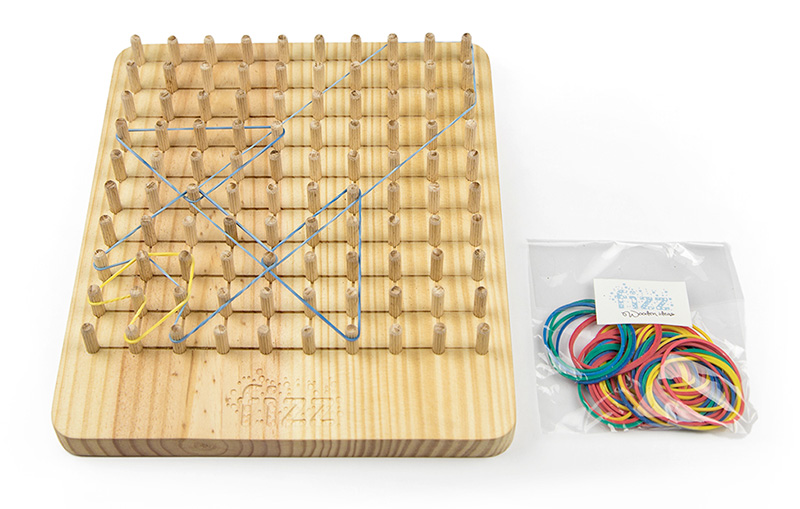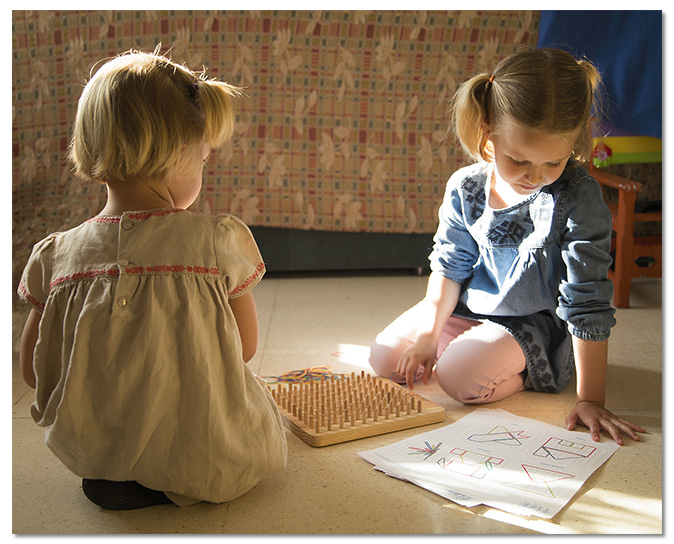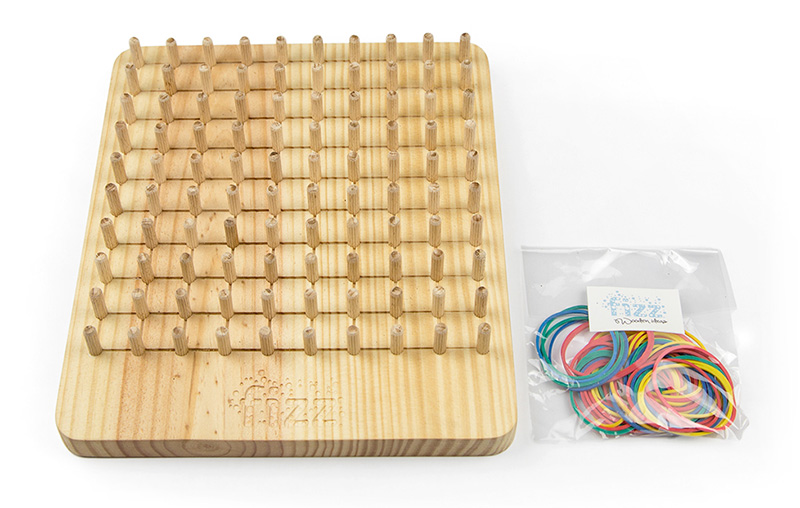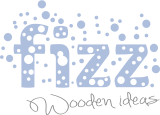Square Geoboard
Square Geoboard
Square Geoboard
What is it?
It is a didactic resource created by the mathematician Caleb Gattegno (1960) to introduce geometric concepts in a manipulative way, favouring a greater understanding of them.
It consists of a square board that forms a frame with pegs where the elastic bands can be hooked to represent different shapes. Thus, children will discover the relationship between surface and volume, understand the concept of area and the horizontal / vertical plane and will associate geometry with algebra and calculus.
Additionally, due to its grid shape, it also helps with learning multiplication tables.
Who is it for?
It can be used from 3 years of age, although it is more useful and gives greater enjoyment in the middle cycle of Primary Education.
It has an evolutionary character: from the reproduction of given shapes or developing creativity to working on various mathematical properties.
How is it used?
It offers various possibilities:
– Free construction: use of rubber bands to develop designs and work on fine motor skills.
– Representation of geometric shapes: use rubber bands to work on plane geometry and basic mathematical processes such as scaling, shifting, symmetry, etc.
– Representation of shapes found in everyday life: use rubber bands to build two-dimensional objects by copying a given model.
– Construction of Chinese tangram figures.
– Representation of multiplication tables: the mathematical process is worked on in a manipulative way.



What does it develop?
-Representation of geometry in a playful and attractive way in the early years.
– Development of creativity through the composition and decomposition of geometric shapes in a free play context.
– Acquisition of greater intellectual autonomy for students enabling them, through free and directed activities, to discover for themselves some of the basic knowledge of geometry.
– Development of the reversibility of thought: the quick and easy manipulation of the rubber bands allows carrying out various transformations and returning to the initial position by undoing the movement.
– The work of basic topological notions: open lines, closed lines, borders, regions, etc.
– Recognition of flat geometric shapes.
– Development of spatial orientation.
-Recognition and acquisition of the notion of angle, vertex and side.
– Composition and decomposition of shapes through the superposition of polygons.
– Introduction to the classification of polygons from side counting activities.
– Acquisition of the intuitive concept of surface through the grids that each polygon contains.
– Introduction to the movements of the plane, by being able to turn the GEOBOARD and see the same shape from different positions.
– Development of symmetries and the notion of rotation.
– Promotion of students’ creativity and interest in participating in their own learning process.
To deepen the activities, you can download the complete instructions and a multitude of shapes in the following PDFs:
